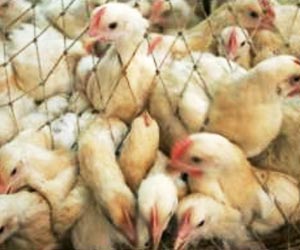Researchers from Nottingham Trent University in Britain are developing a device that can detect an outbreak of bird flu in two hours.
Presently, it takes two to three days to identify the strain responsible for suspected cases of bird flu, or up to a week in countries such as Indonesia and Vietnam, which are most affected by the virus.The new device could reduce this to a matter of hours, making it possible to set up exclusion zones or cull-infected birds before the virus has a chance to spread.
The researchers are developing two machines - a briefcase-sized version for use out in the field, and one about the size of a desktop computer for international border points, hospitals and GPs' surgeries.
The technology works by scanning swabs containing saliva or a tissue sample from birds or animals, and screening them for viral traces of influenza.
Alan McNally, who is working on the project, said that the latest technology would allow fast, on-the-spot screening.
"The key thing is that the process will be fully automated so there is no requirement for a skilled person," Times Online quoted him, as saying.
Advertisement
SRM







